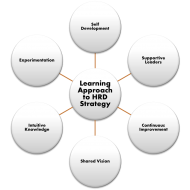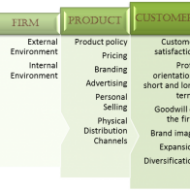Posted by Managementguru in Business Management, Human Resource, Organisational behaviour, Principles of Management, Strategy, Training & Development
on Oct 12th, 2014 | 0 comments

What can be the top 5 productivity killers in your office? I’d like to start this discussion with an apt quote by Timothy Ferriss that says “Focus on being productive instead of busy”. Productivity Killer 1 – PAY OR COMPENSATION Though there is a general argument that pay is not the primary motivating factor for employees, I feel it is. Employees are always smart who are well versed with the current industry position, financial constraints faced by the company, revenue deficits, and increased competition. Problems arise only when the management is not giving a pay rise periodically and more so when the workers feel there is no equity in financial treatment with their peers both inside and outside the company. It is true that the most contented and engaged employees feel they work for something more than just money. It’s the management’s responsibility to provide that sense of belonging and implication. Statistics : The category “Quits” (more than 2 million Americans are voluntarily leaving their jobs every month even in a climate of business uncertainty and an unemployment rate of 7.8 percent) show that inadequate compensation is by far the number one reason that dissatisfied employees want to leave their job. It has been proven time and again that fair pay practices benefit not only the employee, but also the employer. Solution: Open Reward System and make them stake holders in your company. Read On: A very informative blog post about why teamwork is important when it comes to virtual teams, from Virtualhub.com Ways to Improve Work Performance: Getting the Best from Your Virtual Assistant Finding the Productivity Sweet Spot – View this infographic from NICE systems on time wasted at work to understand if fantasy football or facebook causes us to procrastinate more: Productivity Killer 2 – UNPRODUCTIVE OFFICE SPACE The right kind of workspace can greatly enhance employees’ peace of mind and productivity. It only calls for a few simple design fixes in your office environment to make it much more productive. The Color Affects System, developed by world-renown color psychologist Angela Wright, establishes that while individuals might have certain preferences for color, the effects of color influence people universally. It the secret lies in the saturation and intensity of the color choice where highly saturated, bright colors will motivate while softer, gentle hues tend to be soothing. Pic Courtesy: Marieclaire.com Letting in a lot of natural light increases productivity, energy and creativity. Ensure that employees have the space to get up and take a walk occasionally and not chained to their cubicles rightly termed as monolithic insanity, or maybe a lounge area where they can relax for a while instead of sitting in the same place all day. Statistics: A nation-wide survey conducted on behalf of Ask.com, in which they canvassed more than 2,060 professionals ages 18 and up, to unearth the preferences and habits of U.S. office workers when it comes to an optimally productive environment. As it turns out, telecommuting, group projects, impromptu meetings, cubicles, sitting next to the boss, and face-to-face interactions are other big culprits. Solution: Good Ergonomics is good economics and creating a personal space where you can tune out the outside world and maximize output is considered more valuable. Related: Smart Ways to Compensate Employees Productivity Killer 3 – PERSONAL USE OF TECHNOLOGY When it comes to office distractions or diversions, it is no wonder that the leading problem is the personal use of technology. A surprising one in four workers confessed to spending at least one hour a day on personal calls, emails or texts while on the clock. One in five said she/he spent at least one...

Posted by Managementguru in Business Management, Decision Making, Principles of Management, Project Management, Strategy
on Jul 31st, 2014 | 0 comments

A goal has the word ‘go’ in it. Your goals should go forward in an unambiguous direction. However, goals are more about everything you accomplish on your journey, rather than getting to that distant point. Goals will often go into undiscovered territory and you therefore can’t even know where the end will be.

Posted by Managementguru in Business Management, Human Resource, Labor Management, Motivation, Principles of Management
on Jun 10th, 2014 | 0 comments

The employees have to be compensated for what they do for an organization – hold on folks, besides the salary prerequisites, there are many other things which help in retaining them in the company and sustain their motivation. Monetary benefits alone do not satisfy employees. You have to think about other ways to pay back your employees through non cash benefits to make them feel they belong. Motivation is a big factor for consideration when it comes to retaining your employees. Direct Compensation Employees expect fair wages commensurate with their skills, experience and job content. Wages should be ascertained keeping in mind the cost of living in the particular locality. These should be revised periodically to account for inflation so that the real wages do not go down over the time. Wages must have a system of yearly increments, which should be flexible enough to reward good performance. Legal Perspective In India, the Minimum Wages Act, 1948 provides for fixation and enforcement of minimum wages in respect of scheduled employments. A tripartite Committee Viz., “The Committee on Fair Wage” was set up in 1948 to provide guidelines for wage structures in the country. Article 39 states that the State shall, in particular, direct its policy towards securing (a) that the citizen, men and women equally shall have the right to an adequate livelihood and (b) that there is equal pay for equal work for both men and women. Fringe Benefits These are also termed as indirect compensation that an organization provides to its employees which may include – insurance against accident, travel concessions, medical facilities, subsidized meals, uniforms, housing etc. The Finance Act, 2005 has introduced a new chapter VII-H, ‘Income-tax on Fringe Benefits’. The Chapter now brings to tax the fringe benefits collectively enjoyed by the employees and which cannot be attributed to individual employees. The Fringe Benefit Tax is to be borne by the Employer. Different methods of employee compensation! Promotion Employees expect to improve their position in the hierarchy over the time. This improvement in position is called promotion. 1. It immensely helps an employee to feel important and useful to the firm. 2. It enhances his/her status within and outside the organization. 3. Through promotion, he/she looks forward to accomplishing more challenging tasks, including participation in the decision making process. Payday Meme! Out of 440 million workers in India, 93% of the workers are in the unorganized sector. The contributions made by the unorganized sector to the national income, is very substantial as compared to that of the organized sector. It adds more than 60% to the national income while the contribution of the organized sector is almost half of that depending on the industry. In India, only about 8% of workers actually get the benefits available under various labor Acts. The rest 92% work in the unorganized sector, and either are not eligible for coverage. Types of Compensation! Job Security One main reason why people are reluctant to join small enterprises even at higher salaries is their ‘apprehension’ about ‘job security’. An enterprise that is able to dispel such apprehension benefits substantially in the long run. Working Conditions One primary cause of dissatisfaction of workers is ‘the quality of their working life’ which includes Reasonable hours of workA work placeTea breaksProvisions for a room for recreation, lunch etc.Availability of safety equipment and first aid facilities, andWater cooler, lavatory etc. These things may not improve productivity, but will help in preventing job dissatisfaction among workers. The management must also ensure that cordiality and friendliness is maintained between the workers. An environment should be created in which the superiors and senior employees and workers develop mutual...

Posted by Managementguru in Human Resource, Organisational behaviour, Principles of Management, Strategy
on May 24th, 2014 | 0 comments

What are Learning Organizations? Need for Learning Organizations: The ever evolving, dynamic business environment and the complex relationship among various countries in the political and business arena necessitate the need for a learning organization. This becomes essential for organizations to be flexible and be able to respond to change which is the only enduring source of competitive strength. What is a learning organization? A learning organization is the term given to a company that facilitates the learning of its members and continuously transforms itself. Learning organizations develop as a result of the pressures facing modern organizations and enables them to remain competitive in the business environment. Learning is used to reach their goals and avoid repeating mistakes. Employees learn to link their personal goals to organizational goals and link rewards to key measures of performance. The managers learn to design systems and procedures to motivate learning process and to encourage employees to feel free to share information and take risks. Characteristics of a learning organization: It nurtures a climate of trust in the organization and people are encouraged to learn and develop their #knowledge and skill sets. It inspires human resources in the immediate external environment such as customers, suppliers, creditors etc., to learn as and when possible. The whole business policy revolves around #HRD strategy. The organization subjects itself to continuous transformation in which learning and working run hand-in-hand. Learning Based Techniques: Organizational learning concept is the latest OD (#Organizational Development) technique. #Ernst & Young, the largest #accounting firm has set the following procedures for learning purpose. Managers play a vital role in this transformational process of learning. They are responsible for choosing employees who are willing to and capable of learning, and must ensure that the participants in the program are trainable. They must get the support of #trainees and others. Trainees must be appraised about the benefits that will result from training and the managers also should enjoy the support of supervisors, #co-workers and their sub-ordinates. This is very essential to facilitate learning process, to ensure availing of honor and respect of peers and sub-ordinates. The opinion of trainees, supervisors, co-workers and sub-ordinates must be obtained on the content of training, the location and the time and duration of the training. Managers also play a key role in assisting others in goal-setting and meeting those goals. Goal setting is necessary to improve their performance and direct their attention to specific #behavior that needs to be changed. Managers may assist the sub-ordinates and peers to identify tools and resources for acquiring knowledge. Managers must also focus on providing performance feedback as it serves two objectives; it provides information on performance and serves as a motivating tool. Managers should urge their employees to analyze their performance, identify weaknesses and take action to overcome weaknesses. Managers may assist the employee to transfer the learned skills/knowledge to work. It will be a wiser move to design #training methods in such a way as to enable the trainees to practice skills on their jobs between training sessions. DOWNLOAD THE PDF VERSION...

Posted by Managementguru in Business Management, Entrepreneurship, Marketing, Principles of Management
on May 15th, 2014 | 0 comments

Market Assessment Framework Industries whether small or large function in an environment of controllable and uncontrollable variables. A small enterprise has to constantly interact with the market in which it has to operate and is also exposed to the risk of other environmental factors. Its marketing efforts must stay fine-tuned to suit the requirements of the market in general and the needs and wants of the customers in particular. They have to develop an exceptional market orientation in light of Intensified industrial activity Increased competition and Increased discerning capacity of customers. Need for Market Assessment: The marketing orientation outlook will drive an entrepreneur to seek answers to many questions relating to market segments, marketing inputs, product quality, price structure, technology of manufacture etc., before setting up the venture. This exercise will facilitate him/her to move ahead with greater degree of confidence and tackle the problems that may arise during the later stages, in a professional manner. Market Composition: Analysis of market demand, the competitive situation and trade practices are vital for a sound market assessment. The market is composed of a large variety of customers who differ in their likes and dislikes, options, preferences, education, employment, income and status. The location of customers also differ, some may be located nearer and others in distant places. Here are 30 Great Marketing Ideas to Increase Sales for Your Small Business: Factors that help a firm to decide the target segment which is of special interest: Resource availability Scale of operation and its Impact on profitability The identification of the customer groups aids in making an estimate of the market demand for the product chosen. Look for Competitive Situation: Once the market demand has been estimated, one has to look for the competitive situation prevailing in the market as a firm cannot just pursue its own policies without considering what the competitors are up to. The nature and extent of competition will place several constraints on the marketing policies of a firm and a thorough analysis of the same will help in pricing and also in identifying the gaps and opportunities that will be available for exploitation. Opportunity Evaluation: An intelligent and experienced entrepreneur would weigh an opportunity as follows: How large is the gap between demand and supply in the market and what is the nature of competition in the market for the product? Whether the product is covered under any of the promotional policies of the government, so that, either entry into business or competition in the market is facilitated. Whether there is any special product/service specific problem that he/she will face and can avail of any part of promotional policies, to soften the impact of these problems. Based on such product-market-policy, policy-product-market type of analysis, the entrepreneur will finally conclude if the opportunity is worth investing...










